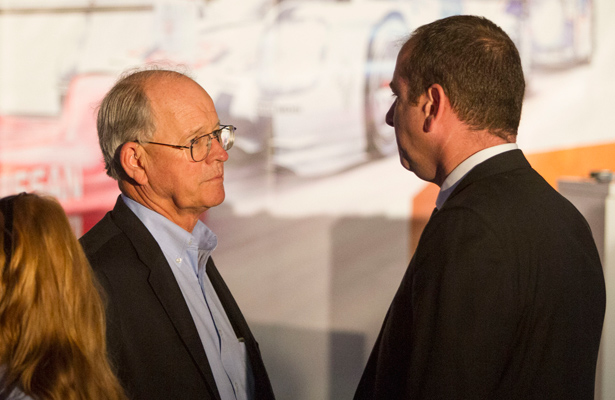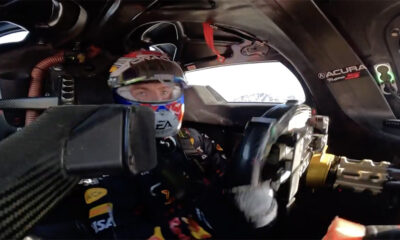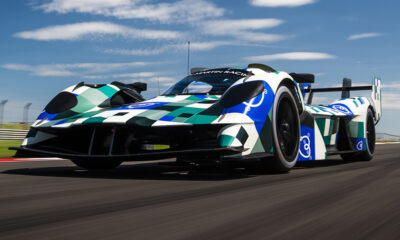
Photo: Brian Cleary/BCPix.com
Beyond the confirmation of the 2017 LMP2 regulations, much remains officially undecided when it will come to the landscape of what car content is on the TUDOR Championship grid going forward after 2017.
As expected, the new-for-2017 LMP2 regulations revealed at Thursday’s Automobile Club de l’Ouest press conference in Le Mans confirmed a difference between the ACO specifications and those used in IMSA in the TUDOR United SportsCar Championship.
The TUDOR Championship teams will have the same four-constructor limit, albeit ones that can have different manufacturer bodywork styling cues if desired. Multiple engines was also confirmed.
Any P2 chassis that races in the U.S. can go to Le Mans as is, unless manufacturer bodywork is applied in which case a U.S. team would need to revert to the original bodywork.
The cooperation between the ACO and IMSA appeared evident during today’s press conference (ACO Sporting Director Vincent Beaumesnil and Jim France, vice chairman and executive vice president of NASCAR are pictured above).
On the whole, IMSA President/COO Scott Atherton said his organization hopes to have a determination on what cars could be grandfathered in for 2017 in both the prototype and GT ranks within the next month.
“We are narrowing our options in terms of what cars may or may not be grandfathered both in GT and Prototype,” Atherton told Sportscar365.
“I don’t want to provide any hints. We as an organization would rather would provide that all at one time. We’d like to do it as soon as possible, ideally in the next 30 days.”
The future of LMP3 also remains a major talking point. Atherton confirmed the test for at least one Ginetta-Nissan LMP3 at Watkins Glen following the Sahlen’s Six Hours of the Glen later this month, potentially with a second Ginetta possible.
In terms of the category adoption into the TUDOR Championship, Atherton said the series would likely follow ACO regulations if the class is integrated.
“There are multiple manufacturers, and constructors. If we elect to incorporate the LMP3 category, I believe we would do it in a way similar to the ACO,” Atherton said.
“It would be open to multiple manufacturers and constructors, but they have a spec powertrain. We would likely take a similar approach, but it hasn’t been decided.”
Beyond the LMP3 test, IMSA is set to conduct a Balance of Performance test between GTE and FIA GT3-spec cars at Watkins Glen as well at the same time.
New GTE regulations for 2016 were also confirmed at today’s ACO press conference.
“Our technical committee, and it is a committee as opposed to years past of focusing on just one individual, is deep into that process already,” Atherton said.
“We are also going to be testing current spec-FIA GT3 cars just after Watkins Glen to baseline the performance.
“We have taken careful notes of some of the tracks we race on with the World Challenge, to compare our lap times with our current GTLM cars. There already exists a healthy separation there.
“We are confident even going forward with new FIA GT3 regs coming online and cars with higher levels of capabilities for ‘16 than is the case today, we will still have the appropriate separation between our GTLM and what will be FIA GT3-spec featured in the GT Daytona class.
“It’s not something we’re assuming is going to correct. We’re actively involved.”
While the IMSA portion of today’s ACO press conference featured only a brief presentation given by Lesa France Kennedy, CEO of International Speedway Corp., regarding the new Daytona Rising grandstands, Atherton said that was the game plan.
“The focus was always on Daytona Rising,” Atherton said. “We have been working very diligently to finalize the regulations, not only of the IMSA version of the next generation prototype, but all of it. We’re not there yet.
“Our decision was rather than to piecemeal it out, let’s wait until we have the entire story to tell and we’ll announce it at that time. It’s not far off, but the soufflé hasn’t risen all the way yet.”
























